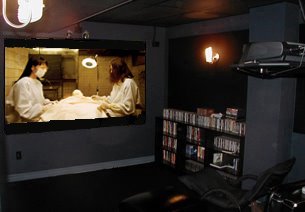KBT Presents: VITAL

When we are young and do crazy things, do we flirt with death because we do not understand it, or are we just wired that way?
Japanese auteur Shinya Tsukamoto delicately tells the story of a man who recovers from an difficult personal tragedy by literally dissecting his girlfriend. Before you lock in a mental picture of the previous sentence, know that the film is not an exploitation piece. It is in fact a film which wishes to probe the idea of the human body as a document. Can dead flesh be a record of who that person was? Stretching beyond the physical towards the spiritual, the end results it is actually quite respectful of the flesh. (Anatomical pencil sketchs shown throughout the picture display a haunting type of beauty.)
Vital is not a horror film or even science fiction in any conventional sense. The basic narrative, when a description is attempted, actually sounds like a collection of bad movie clichés requiring co-incidences of the highest order to make sense: A man wakes up with amnesia. He is told by his father that he was in a car accident with his girlfriend (who died). He enrolls in medical school and years later when he gets to his anatomy lab, gets his girlfriend as the cadaver. He does not know this at first. But has he does the hands-on-course work his memories of life with her begin to flood back. He is able to move on with his life because he has done this.
The movie does not even attempt to exist in the 'real world,' opting to explore the concept through metaphor much like the bodies of work of Antonioni, Tarkovsky or even Vincent Ward. Spiritual questions posed are probed through visuals more than dialogue. Yes, Tsukamoto knows the medium he is working in. It is difficult enough to address these questions with words. It is a treat to watch such a morbid yet beautiful film work so well. As memory returns in 'flashbacks, 'the lead character, played by Tadanobu Asano, is not just reliving the moments with his girlfriend, but also existing outside the moment, as if memory and nostalgia for the past give him a new way to interact with her. She is prescient and omniscient in those dreams. This is illustrated through a couple tour-de-force dance sequences against some stunning cinematography. Emotional, intellectual and even sexual engagement (no, there is no necrophilia for those of you with dirty minds) of the movie is unsurpassed this year for me. The film references Blade Runner (which for that, will put any movie at least on my curiously list) several times - from memory as tears in rain, to the belching smokestacks which open both films. While most known for his guerilla fusions of tissue, tendons and technology explored his own Tetsuo films, here Tsukamoto explores the flesh as the soul.

0 Comments:
Post a Comment
<< Home